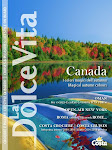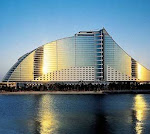It may not have the highest mountains in all Europe, but those who have tried it would say that skiing in Andorra has it all.
In the last ten years, over €50m has gone into staggering improvements in ski facilities and many times that into Andorra’s tourist infrastructure. When the sun shines – and it shines a lot in winter, so don’t forget the sun cream – literally thousands of the latest snow-cannons ensure that the resorts have excellent snow cover from Dec 1st to the end of April.
There are now two macro-resorts in Andorra, grouping the five original stations, both with skiing at between 2.500m and 1.750.
GrandValira (comprising Pas de la Casa, Grau Roig and Soldeu/ElTarter) has the biggest skiing area in the whole of the Pyrenees. Dedicated skiers will probably go for this option and their whole holiday will probably cost them about 70% of what it would cost in the Alps for the same quality of facilities and some pretty challenging skiing. As for après-ski fun, it might lack St Moritz chic but instead of platinum prices, read bronze.
On the other side of the country, Vallnord (comprising Pal-Arinsal and Arcalís) centres on La Massana and Arinsal and Ordino. Vallnord is a much more intimate resort and ski holiday prices are even more reasonable. Families with young children tend to prefer being in Arinsal which, despite having slightly more limited skiing, is Andorra’s premier all-year-round holiday village, partly because 90% of Andorra’s international community live within a five km radius of Pal-Arinsal and it is only 15mins by car to the capital’s outstanding tax-free shopping facilities and spa centre. The Vallnord area has recently seen vigorous growth in the summer as well, due to the growing demand for biking and hiking holidays.
In 2009, Vallnord hosts the World Mountain-Bike Championships for the second year running and the Copa Catalana 2008 was also held there.
On both sides of the country, despite a whole range of excellent hotels offering 33.000 beds (one for every 2,5 residents) there is steady demand in the high seasons, from Andorra’s 11m visitors a year, for affordable accommodation in private apartments and chalets.
Servissim, established for nearly 20 years, is the largest English-speaking services company in Andorra and via its www.andorra-holidays.com division, is the leading country-wide organisation dealing with the direct-selling private of holiday accommodation owned by its foreign-based clients.
In many years, clients have seen spectacular growth in their investments, but Andorra has always been better-known for its solid growth in the long-term. Even with the property shocks of the last year, returns (income and capital appreciation) have hardly wavered from 9% per annum, cumulative, in all of those 20 years and taxes on foreign-owned property held long-term are negligible. Because of this – and a natural flight to quality – prices are already beginning to stabilise and Andorra, with its overall lower price advantage, should do better than most other destinations in weathering the current recessionary tendency. Bookings, if anything, are slightly up over the same period last year.
However, much of the interest in having a holiday property in Andorra is not just in the investment itself, but in the owners being able to pick and choose their own dates to visit Andorra, one of the safest, most-enjoyable, places to live in the whole of Europe.
Our best recommendation is to go and see the opportunities there for yourself.
By Simon Binsted
Tuesday, September 23, 2008
Thursday, September 18, 2008
Genoa
The Genoese have stopped grumbling. According to the poet Edoardo Sanguineti, the Genoese were always grumbling and this grumbling sound had become Genoa’s background noise, so rooted in her inhabitant that they had lost their original accent. Such grumbling, which had accompanied the slow decline of the city after the end of the second world war, became muffled as Genoa started getting her former color back – not just that of her salt-washed palaces – to take back her rightful position and shed her backwater reputation first with the 1992 Expo and now as a City of Culture for 2004. Today Genoa is dynamic, high-tech and many splendor city as of old, as well as being extremely beautiful in its position between sea and mountains.
She is no longer a Cinderella, but a Queen: first sea power, more powerful than Venice or Pisa in the fourteenth century, a rich and cosmopolitan city that could afford imports from all over the world then known. As one of Europe’s major capital cities in the sixteenth century, it moved from French to Spanish influence and at this time became rich with sumptuous palaces and churches, showing frescoes and stucco work. It became an art capital in the seventeenth century when it received the most fashionable Flemish artists of the time, masters such as Pieter Paul Rubens and Antonie Van Dick. The local aristocracy started to buy on a grand scale the works of such masters as Tintoretto and Titian, Caravaggio and Guercino. In the nineteenth century it became a laboratory for eclectic architecture, which, under the House of Savoy, it saw the rise of such masterpieces as the Carlo Felice theatre and the bizarre buildings of the Florentine architect Gino Coppedé. For a few decades, starting from the fifties, the crisis in industry and in port activities started to dim the ancient splendor of the city which was caught between an awareness of its decadence and a frustrating memory of better times. But pride came back as it is only proper for someone who has been too rich and too powerful. Starting from the late Nineties, Genoa took steps, obstinately but cleverly, to regain her lost splendor. The old, mammoth, unproductive industry was replaced by smaller, more enterprising activities; investments were made in advanced electronics and technology. Genoa changed her face as well as her symbols.
Today they are the Bigo, a large, futuristic building rising out of the water holding an elevator aloft, the work of Renzo Piano for the Old Port. Another symbol is the Aquarium, showing 6,000 animals of 600 different species in almost 10,000 square meters, one of Europe’s largest structures of its kind. The future is now. With Expo ‘92, during which Piano redeveloped 130,000 square meters of the Old Port transforming it into the city’s most avant-garde area, Genoa celebrated her reawakening.
As a City of Culture for 2004 she is confirming her status as one of Europe’s great cultural capitals.Liguria’s capital has been transformed under the direction of Germano Celant, curator at Guggenheim Museum in New York, into a crucible of cultural and architectural experimentation. No cultural field has been left unexplored, in the same way all areas of the city have been restored to a splendor more lasting than the duration of an exhibition.
Structural work includes the Old Museums Site, centered on Via Garibaldi, an old street lined with aristocrats’ residences in the sixteenth century, to the museum site at Parchi di Nervi, to the palaces at Polo della Darsena, as
Well as the most beautiful and important museums.
Genoa will move through culture like a creature moving through music and art, film and dance, performances for
Children, sea fairs, a special edition of the Suq or Peoples’ Bazaar: music concerts, dance lessons, foreign language courses and meetings on cultural integration (Old Port, June 1-15). Though Rubens, who lived in the city at different times, will take place of honor in the celebrations (over the year one hundred and eighteen exhibitions and as many meetings), there will be many others on great artists and movements, for example Chagall (Jewish Museum, April 5 to June 15). One exhibition will focus on silversmiths and goldsmiths in Genoa between the sixteenth and the eighteenth centuries, another on the life and the world of Leon Battista Alberti. Genoa’s year of culture will see a variety of events, ranging through all fields of artistic and cultural Endeavour, to satisfy the curiosity of millions of visitors. In the musical field too, people will move from a tango festival running through the city’s squares to a jazz festival at Golfo Paradiso, and from traditional genoese songs to classical music. People interested in talks will be able to choose from among various Nobel Prize Laureates, including the writers Günter Grass and José Saramago (Teatro dell’Archivolto, January through May). Other events will be dedicated to the sea.
The City of Children, for example, the largest play area in Italy, in the Old Port, will offer interactive games in which younger visitors will be able to play with three-dimensional reconstructed stage settings above and under sea level. The leading exhibition in this are will be one on ocean liners, at The National Museum of Antarctica: photographs, pictures and animation will illustrate in great detail the marine environment and other characteristics of the Antarctic habitat. The idea of the sea, however, is not just a temporary fad. March will see the inauguration of the Museums of the Sea and of Navigation, by the Spanish architect Guillermo Vasquez, and a year later the Dutchman Ben Van Berkel will restore the Parodi Bridge. These are important, monumental works as well as symbols of the subtle, ancestral relationship the Genoese have with the sea, the red thin line that still links, today and always, the city to history.
She is no longer a Cinderella, but a Queen: first sea power, more powerful than Venice or Pisa in the fourteenth century, a rich and cosmopolitan city that could afford imports from all over the world then known. As one of Europe’s major capital cities in the sixteenth century, it moved from French to Spanish influence and at this time became rich with sumptuous palaces and churches, showing frescoes and stucco work. It became an art capital in the seventeenth century when it received the most fashionable Flemish artists of the time, masters such as Pieter Paul Rubens and Antonie Van Dick. The local aristocracy started to buy on a grand scale the works of such masters as Tintoretto and Titian, Caravaggio and Guercino. In the nineteenth century it became a laboratory for eclectic architecture, which, under the House of Savoy, it saw the rise of such masterpieces as the Carlo Felice theatre and the bizarre buildings of the Florentine architect Gino Coppedé. For a few decades, starting from the fifties, the crisis in industry and in port activities started to dim the ancient splendor of the city which was caught between an awareness of its decadence and a frustrating memory of better times. But pride came back as it is only proper for someone who has been too rich and too powerful. Starting from the late Nineties, Genoa took steps, obstinately but cleverly, to regain her lost splendor. The old, mammoth, unproductive industry was replaced by smaller, more enterprising activities; investments were made in advanced electronics and technology. Genoa changed her face as well as her symbols.
Today they are the Bigo, a large, futuristic building rising out of the water holding an elevator aloft, the work of Renzo Piano for the Old Port. Another symbol is the Aquarium, showing 6,000 animals of 600 different species in almost 10,000 square meters, one of Europe’s largest structures of its kind. The future is now. With Expo ‘92, during which Piano redeveloped 130,000 square meters of the Old Port transforming it into the city’s most avant-garde area, Genoa celebrated her reawakening.
As a City of Culture for 2004 she is confirming her status as one of Europe’s great cultural capitals.Liguria’s capital has been transformed under the direction of Germano Celant, curator at Guggenheim Museum in New York, into a crucible of cultural and architectural experimentation. No cultural field has been left unexplored, in the same way all areas of the city have been restored to a splendor more lasting than the duration of an exhibition.
Structural work includes the Old Museums Site, centered on Via Garibaldi, an old street lined with aristocrats’ residences in the sixteenth century, to the museum site at Parchi di Nervi, to the palaces at Polo della Darsena, as
Well as the most beautiful and important museums.
Genoa will move through culture like a creature moving through music and art, film and dance, performances for
Children, sea fairs, a special edition of the Suq or Peoples’ Bazaar: music concerts, dance lessons, foreign language courses and meetings on cultural integration (Old Port, June 1-15). Though Rubens, who lived in the city at different times, will take place of honor in the celebrations (over the year one hundred and eighteen exhibitions and as many meetings), there will be many others on great artists and movements, for example Chagall (Jewish Museum, April 5 to June 15). One exhibition will focus on silversmiths and goldsmiths in Genoa between the sixteenth and the eighteenth centuries, another on the life and the world of Leon Battista Alberti. Genoa’s year of culture will see a variety of events, ranging through all fields of artistic and cultural Endeavour, to satisfy the curiosity of millions of visitors. In the musical field too, people will move from a tango festival running through the city’s squares to a jazz festival at Golfo Paradiso, and from traditional genoese songs to classical music. People interested in talks will be able to choose from among various Nobel Prize Laureates, including the writers Günter Grass and José Saramago (Teatro dell’Archivolto, January through May). Other events will be dedicated to the sea.
The City of Children, for example, the largest play area in Italy, in the Old Port, will offer interactive games in which younger visitors will be able to play with three-dimensional reconstructed stage settings above and under sea level. The leading exhibition in this are will be one on ocean liners, at The National Museum of Antarctica: photographs, pictures and animation will illustrate in great detail the marine environment and other characteristics of the Antarctic habitat. The idea of the sea, however, is not just a temporary fad. March will see the inauguration of the Museums of the Sea and of Navigation, by the Spanish architect Guillermo Vasquez, and a year later the Dutchman Ben Van Berkel will restore the Parodi Bridge. These are important, monumental works as well as symbols of the subtle, ancestral relationship the Genoese have with the sea, the red thin line that still links, today and always, the city to history.
Subscribe to:
Posts (Atom)













